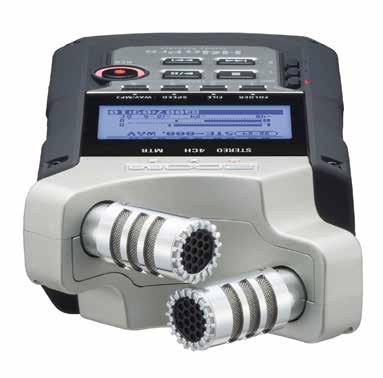
9 minute read
Practice in Choir
18 Florida Music Director Promoting Individual Student Practice in Choir C Choirs are the sum of the individual singers in a group. It is important that not only are the individual singers practicing in high-quality rehearsals in the choir setting, but that they are also rehearsing individually outside of the normal choir rehearsal. This process may seem daunting to some singers at first; however, with the necessary tools, sequencing, and evaluation, individual student practice can have a profound effect on the overall choir. This article offers practical options for choir directors to use for promoting and evaluating individual student practice in choir. Start With “Why” In his book Start With Why: How Great Leaders Inspire Everyone to Take Action, Simon Sinek (2013) writes that “… people don’t buy WHAT you do, they buy WHY you do it, and WHAT you do serves as the tangible proof of WHY you do it” (p. 77). It is very important that the director first explain to his or her students why they should practice on their own. This intentional act of leadership will help bring about the positive change more quickly than simply telling the students what they are going to do and how they are going to do it. Once they understand the director’s reasoning and can see the potential benefits for themselves and the choir, the students will buy in and put forth the effort.
I have observed several positive outcomes as a result of promoting and implementing individual practice for choir singers. The benefits have included greater
PB + D > C

friction in technology as: “… the name given to any quality that makes a product more difficult or time-consuming to use” (Roose, 2018, para. 4). In an article from Scientific American, author David Pogue wrote a formula for the likelihood of voting. Pogues’s (2012) formula was described as follows:
Individual Student Practice
The formula for predicting someone’s likelihood to vote is something like PB + D > C, where P is the probability that your vote will make a difference, B is the benefit to you if your candidate wins, D is the gratification you get from voting, and C is friction—the hassle of registering to vote, then getting to the polling place, standing in line, and so on. Clearly, lowering the friction would increase turnout (para. 9).
by Zachary Thompson
overall musicianship from the students, ownership of each singer’s ability to sing his or her part accurately, students’ willingness to perform more challenging repertoire, and more engaging rehearsals focused on higher-level musical concepts. By developing the habit of practicing choir music individually, students will be better prepared for events such as honor choirs, auditions, and performing in choirs at the college or professional level.
Using Technology There are many different options and mediums for students to use for individual
February/March 2020 19 practice. Students who are capable of playing the piano should be able to play their individual part as a reference with which to sing; however, not every student will be able to play the piano to this level of skill. It is therefore realistic to offer other ways for students to be able to practice. Using technology will offer every student the ability to practice his or her own part from anywhere.
It is important to make technology as easy as possible to use and access to create a “frictionless” environment, which will increase the likelihood for adoption and use by the students. Roose (2018) defined We can transfer this idea for our purposes from the likelihood of voting to the likelihood of students using the provided technology to practice their choir music. Decreasing the number of steps to access the rehearsal files in order to practice will lower the friction and increase the likelihood of student use. In addition, it is important to make the practice tracks accessible by a mobile phone. This will dramatically increase the frequency of use as opposed to being available only on a computer.
There are several options for providing rehearsal tracks for your choir students. Each option comes with pros and cons. The best option for your choir program will come down to your budget, time, piano skill level, and technology skill level. One option is to purchase premade rehearsal tracks with a professional singContinued on page 20
Individual Student Practice Continued from page 19
er performing each voice part, such as Choral Tracks by Matthew Curtis, which has been described as follows: “Choral Tracks offers the highest quality, professionally sung rehearsal tracks for choral singers of all levels, promoting independent, accurate, and expressive singing with a catalog of over 6,000 pieces of music” (Choral Tracks, n.d., para. 1).


20 Florida Music Director There are also several free options from which the director can choose. Cyberbass. com offers practice tracks for choral music under the public domain. This site specializes in major works; however, there are many smaller choral selections available. YouTube.com can also be a great source for finding free rehearsal tracks for choir music. Using this site might require more time to find high-quality rehearsal tracks, though.
Another option is for the director to create his or her own rehearsal tracks. The simplest way to do this is for the director to use the recording application on a smartphone. The director will play and/or sing each voice part one at a time while using the application to record. I recommend using a higher-quality recording device such as a Zoom H4N Pro, if this is the method the director will be using frequently. The director can also play a specific voice part alongside a recording of a high-quality choir performing the piece. This will offer the singers more context while rehearsing their part. In addition, the director can layer the accompaniment or additional voice parts using audio recording and editing software such as Audacity or GarageBand. Finally, the director can input the notes of the score into music notation software such as Finale or Sibelius and export the sound file as an mp3. It is important to note that the director should only distribute the rehearsal files using a closed or internal communication service. To avoid copyright infringements, the rehearsal files should not be made accessible to the public. I have used services such as Remind and Google Classroom to distribute rehearsal files.

Evaluation and Accountability Once the director has laid out the expectations and provided the necessary tools for individual student practice in choir, he or she must hold the students accountable. From my experience, not all of the students will put forth the required amount of time and energy without being monitored and held accountable. Jocko Willink explained, “This is the dichotomy: while a leader wants team members to police themselves because they understand why, the leader still has to hold people accountable through some level of inspection to ensure that the why is not only understood but being acted upon” (Babin & Willink, 2018, p. 190). Ideally, you want the individual singers and each section to hold each other accountable; however, it is ultimately up to the director to provide the external reinforcement of this behavior.
One way to hold the students accountable is by giving them a grade for learning their individual part of their choir music. The director can assign an entire composition or a section of a composition for the singers to learn. There are a variety of ways for the director to hear the singers perform the music, each having a different degree of intensity or difficulty. I have found that starting with the director listening to each singer individually outside of the normal class time is the ideal situation, especially for the first implementation. In addition, the director can assess

Conclusion The experience of promoting individual student practice can positively affect a director’s program. Starting with explaining the reasons why the director wants the students to practice on their own is an important first step. Providing tools such as using frictionless technology for the students will improve the likelihood of implementation. Holding the students accountable through monitoring and graded assessments will ensure that students are learning their choir music. As a result of promoting individual student practice in choir, I have witnessed significant gains in the singers’ ownership of their music, students’ willingness to perform advanced repertoire, and increased engagement of higher-level musical concepts during rehearsals.
the students by hearing them in sections, small groups, quartets, or even the entire choir. Some students are motivated by not letting their section down or being perceived negatively by their peers. The director must use caution and set very clear expectations when singers are being assessed in front of the other singers in the choir. It is also important to explain to the students that they are being graded on their ability to learn and demonstrate their part, not their vocal quality.
In the early stages of implementing this process, the director will need to use frequent assessments. As the students become accustomed to being held accountable for preparing their music, the director will not have to monitor as frequently. That is not to say, however, that the director should stop monitoring and holding the students accountable altogether. Babin and Willink (2018) explained, “For leaders, it is often a struggle to know when and where to hold the line” (p. 68). This can be especially true when implementing a new system such as promoting individual student practice in choir. Babin and Willink continued with, “A leader cannot be overbearing. But the dichotomy here is that a leader cannot be too lenient and let things slide when the safety, mission success, and long-term good of the team are at stake” (p. 68). It is ultimately up to the director to find the balance that works for his or her choirs. Zachary Thompson is the middle school and high school choir director and worship leadership teacher at Covenant Day School in Matthews, North Carolina. He holds the MM in choral conducting from Austin Peay State University and the BME from Slippery Rock University.
References
Babin, L., & Willink, J. (2018). The dichotomy of leadership: Balancing the challenges of extreme ownership to lead and win. New York: St. Martin’s Press.
Choral Tracks (n.d.). Choral tracks: Practice made simple. Retrieved from https://choraltracks. com/en/about-us
Pogue, D. (2012, April 1). Make technology—and the world—frictionless. Scientific American. Retrieved from https://www.scientificamerican.com/article/technologys-friction-problem/
Roose, K. (2018, December 12). Is tech too easy to use? New York Times. Retrieved from https:// www.nytimes.com/2018/12/12/technology/ tech-friction-frictionless.html






